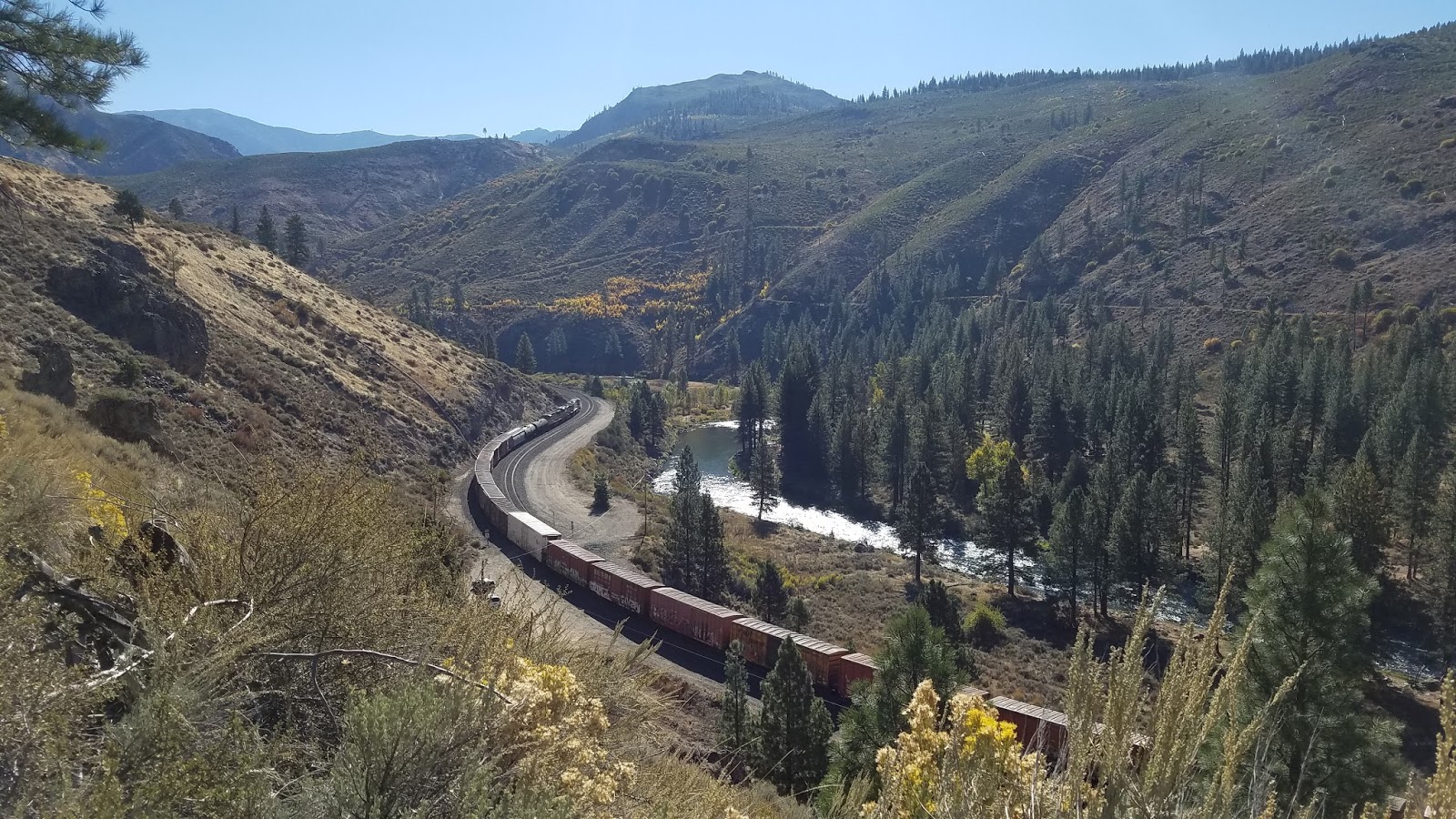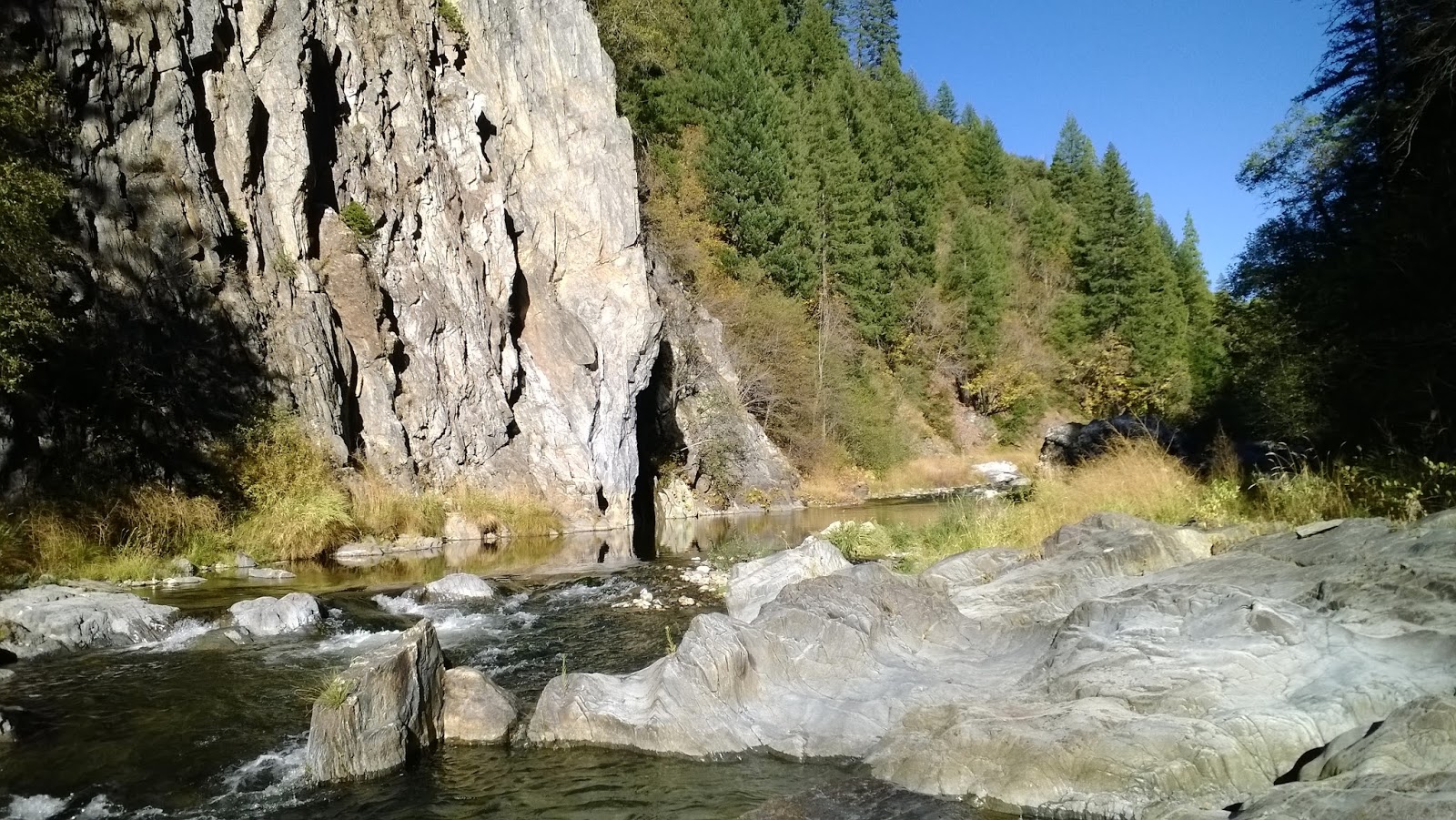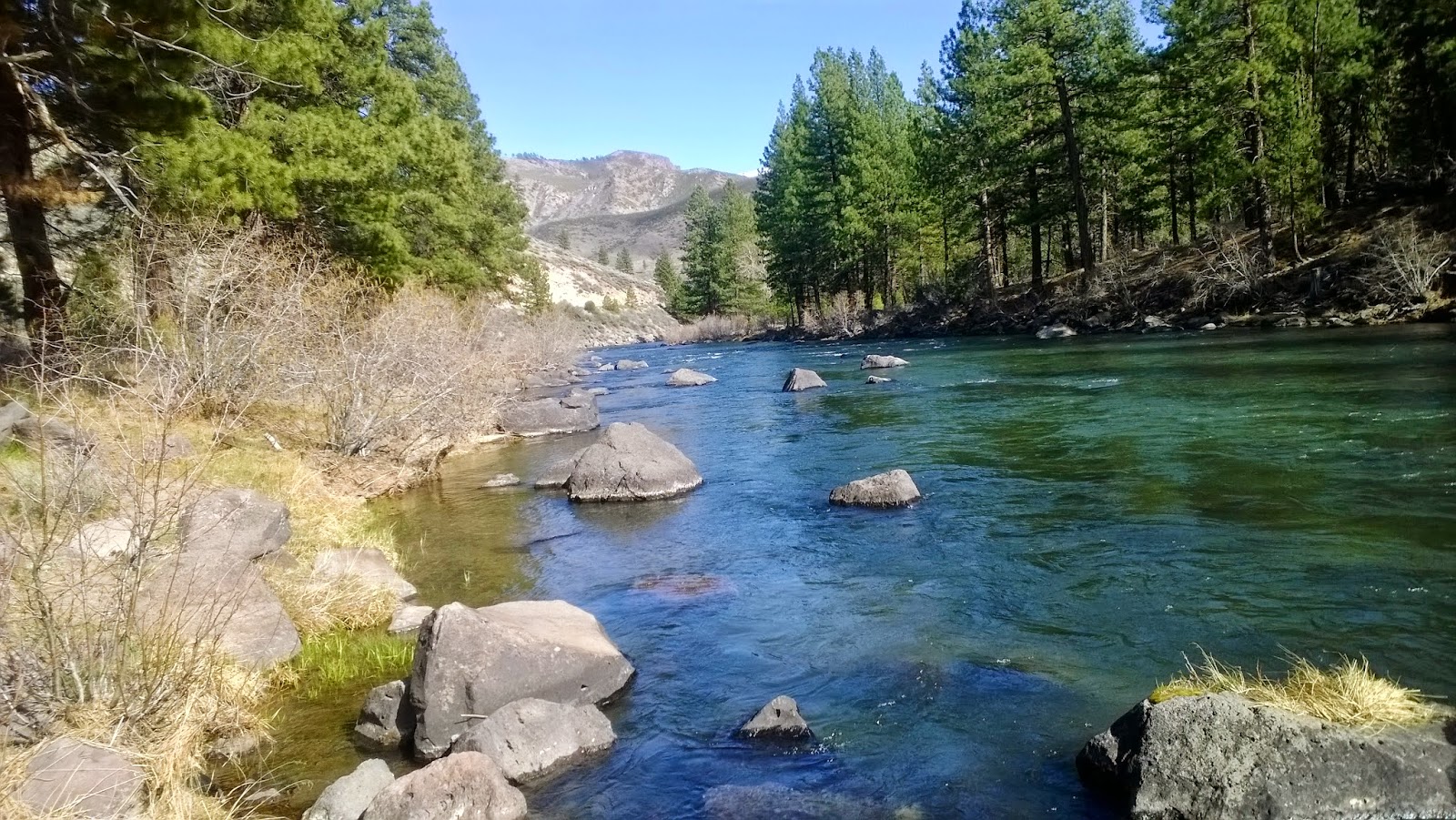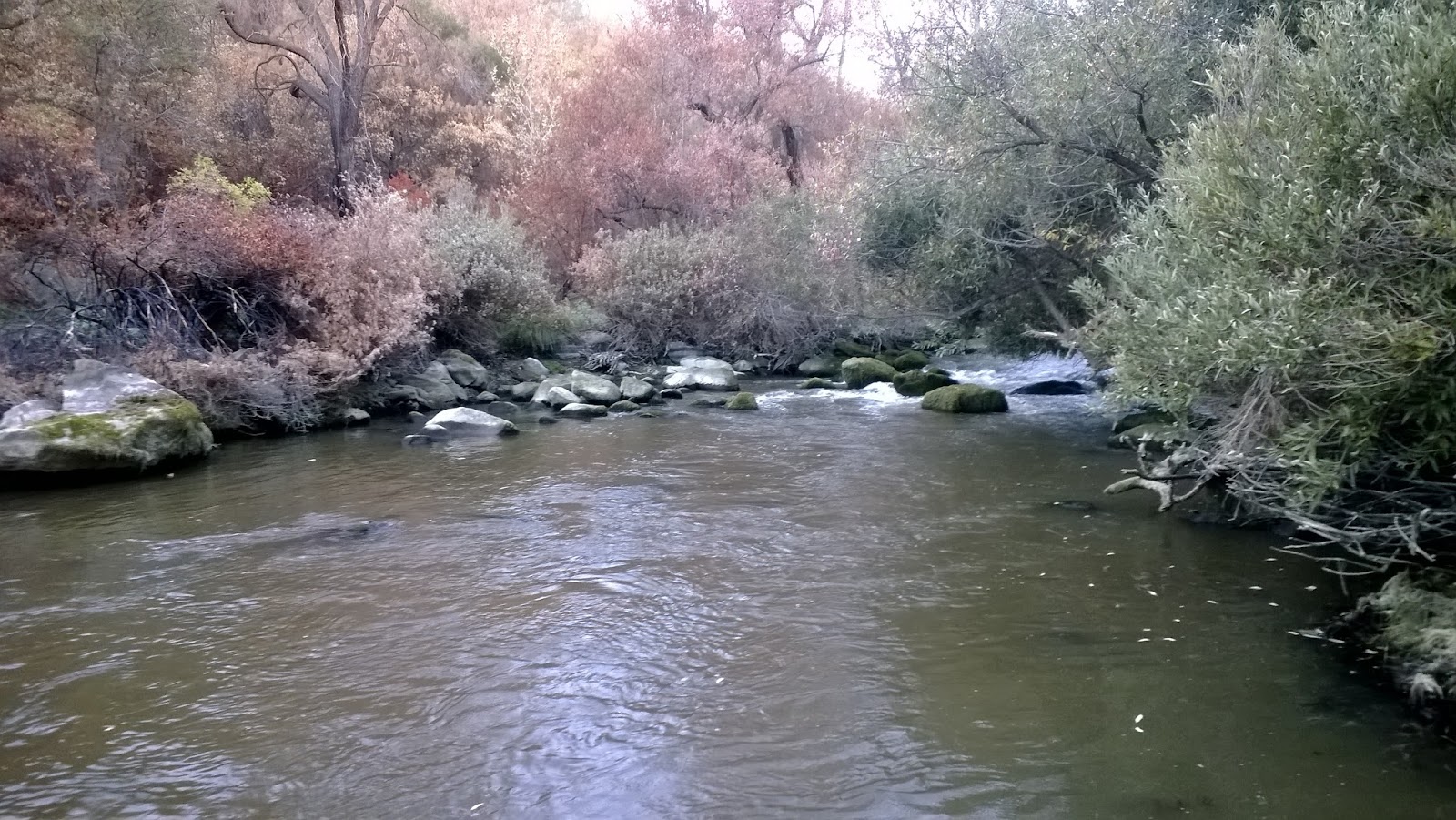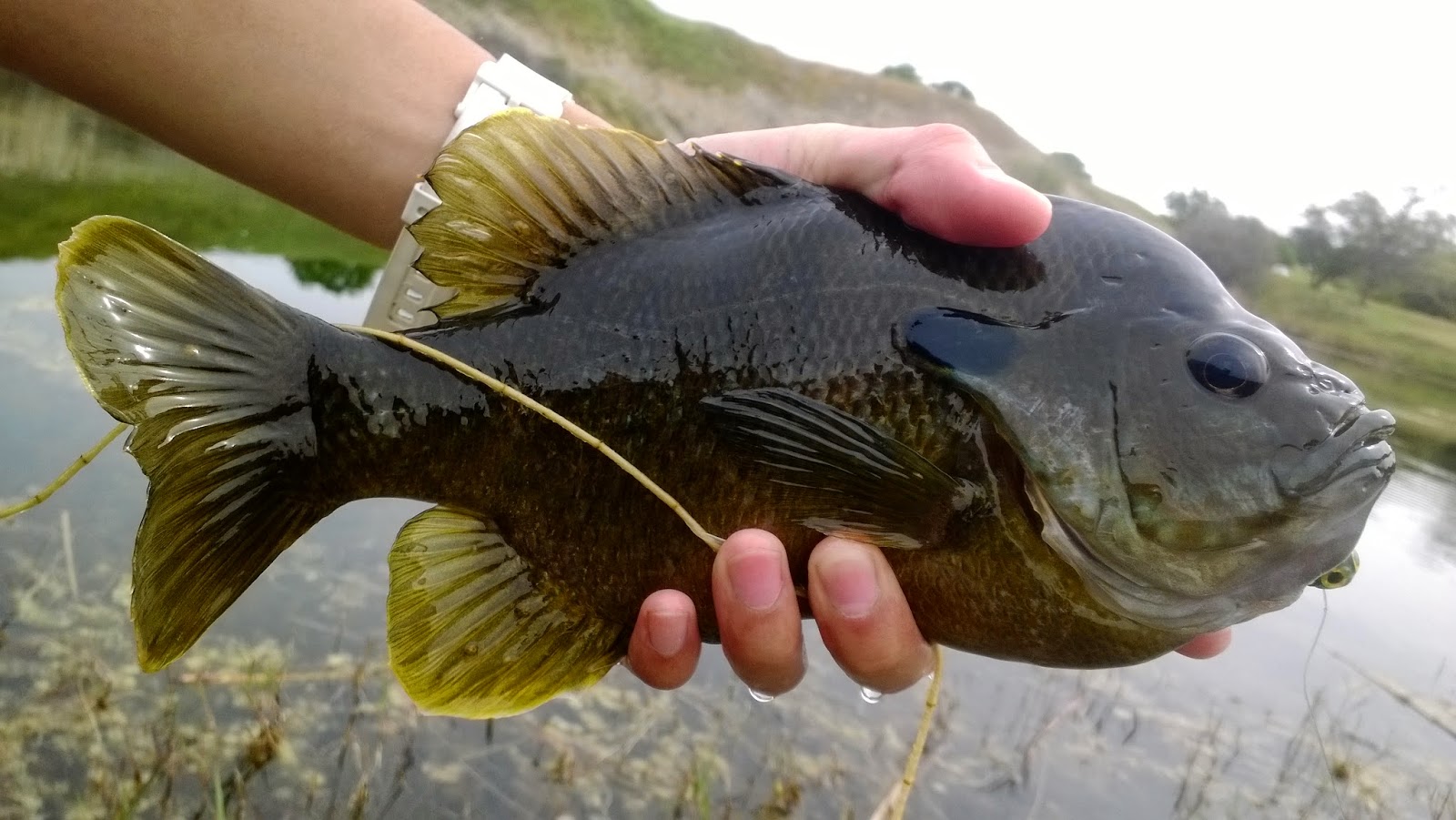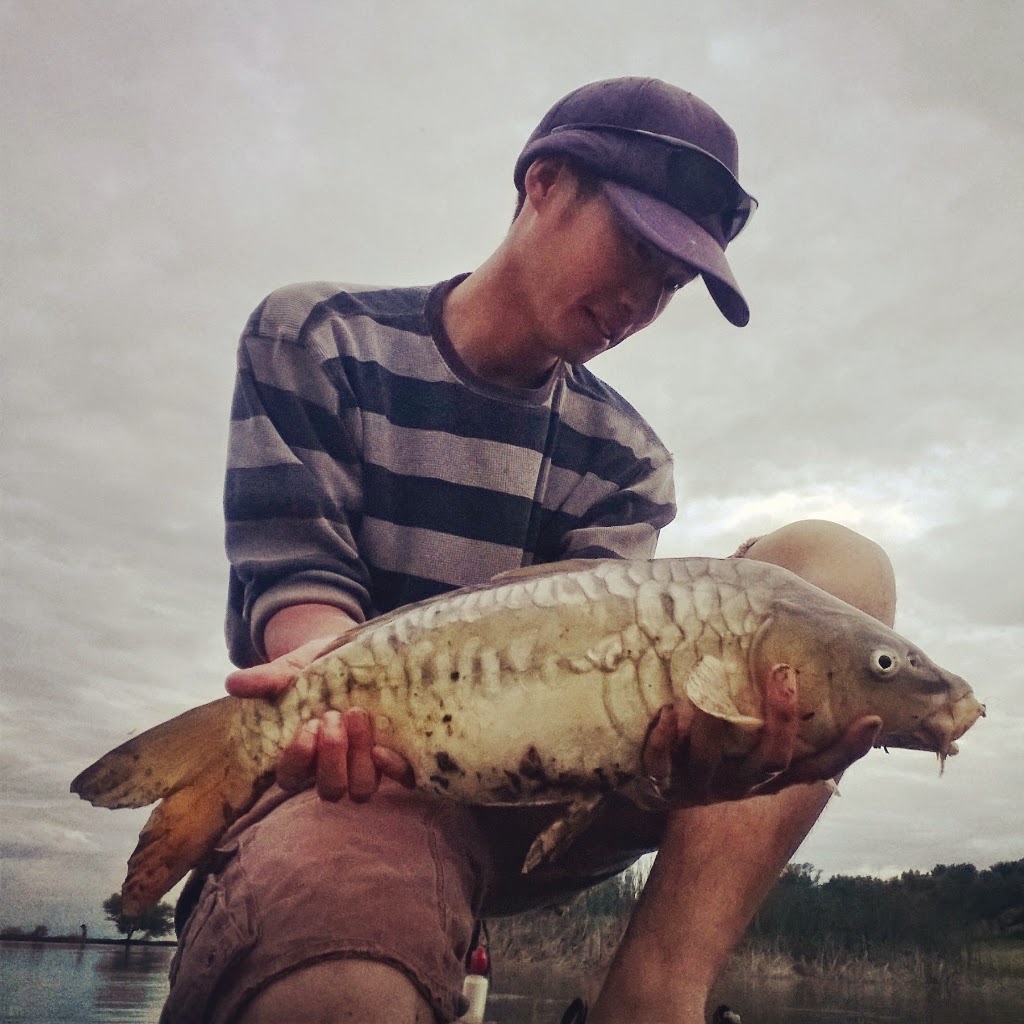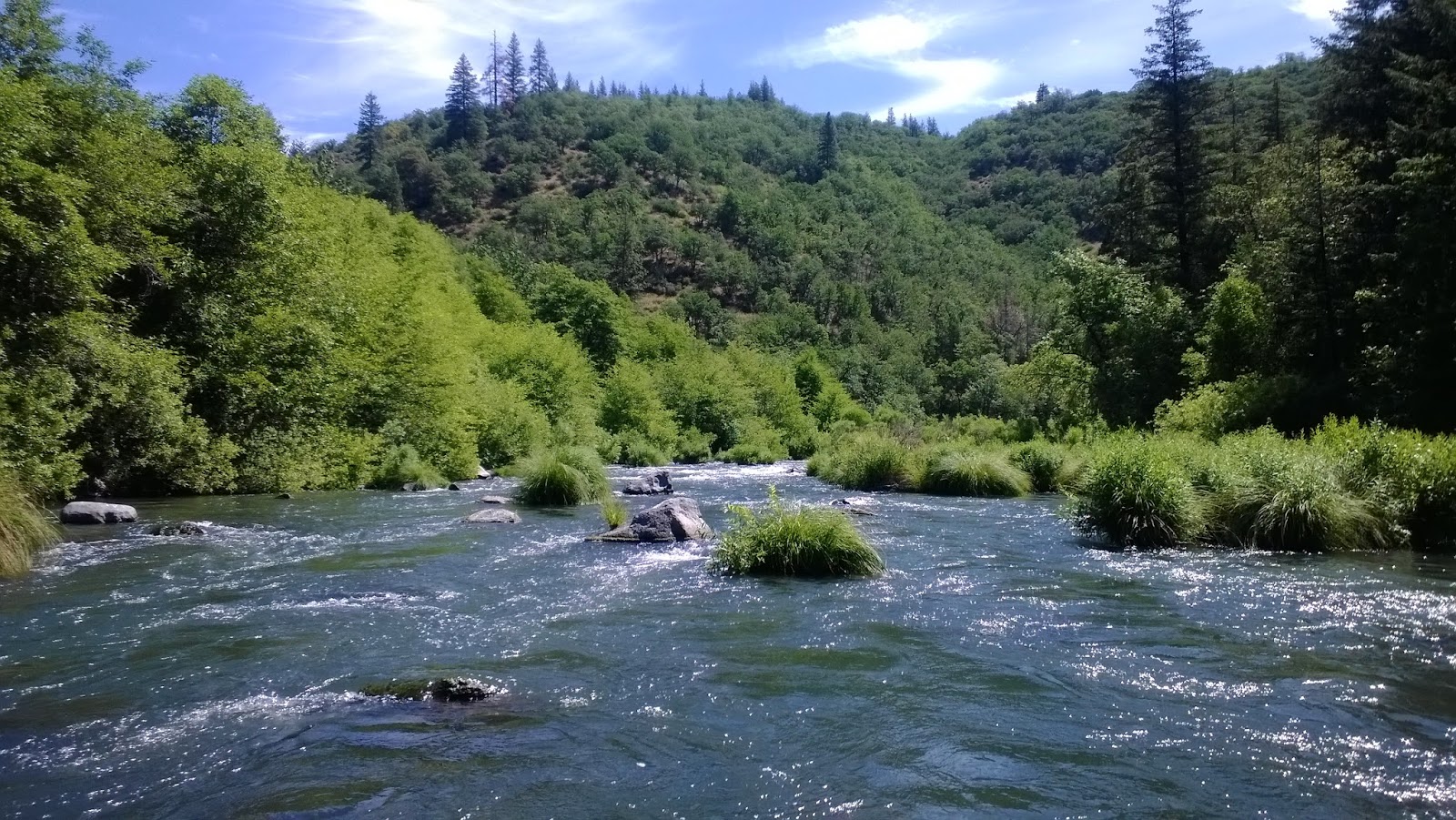 |
| Can I Wade Here? |
There is a river in Northern California that is considered to have one of the highest wild rainbow trout density in the state. This particular river is also notorious for being one of the toughest streams in California to wade. The bottom is said to be made completely of irregular shaped algae-covered boulders and the water is just murky enough to hide the bottom making every step deceiving.
This river has swallowed thousands of freshly tied flies, left battle scars on both flesh and gear, and broken countless rods and wading staffs. Anglers have called this river unfishable and too dangerous to venture since the flows went up. These ominous conditions keep the casual anglers away and hardcore anglers coming back. With a name that truly fits its characteristics, the notorious Pit River.
The Pit River is the longest tributary of the Sacramento River and provides the majority of the water we see in the Sacramento River. The Pit is fed by several streams including two famous spring creeks: Hat Creek and the Fall River. Not only is the Pit an important water source, it also provides a sizable amount of hydrological power to the state of California. There are a series of powerhouses that are numbered accordingly starting upstream from Pit No. 1 downstream to Pit No. 7 where it eventually enters the Sacramento River. Essentially a tail-water, the sections anglers focus are from Pit No.3 below Lake Britton dam downstream to Pit No. 5.
I’ve heard and read rumors, warnings, and stories about the Pit. As someone who loves to explore and fish challenging areas, I had finally planned a trip to enter… the Pit!
Pit River
Before I entered the Pit, I wanted to make sure I was adequately prepared. While I was doing my research I consistently found two things that were necessary to fish the Pit. A wading staff and studded wading boots.
As a minimalist, I prefer to fish with the bare necessities; a vest, a pair of wading socks, a fly rod, and a box of flies. When I need to use a staff to aid in wading I usually look for a sturdy stick off the ground. A wading staff or a sturdy stick of nature can help a tremendous amount when the bottom is covered in slippery algae. I have never slipped or fallen while using a wading staff. In my time fly fishing, I’ve be able to avoid slipping in water hazardous to my health, but I have slipped in knee deep water which can hurt and get cold if it gets in your waders. Slipping around in the water is truly a bitch and can be super embarrassing if people are watching.
A wading staff was necessary but I didn’t own one and there was no way in hell I was going to pay $50+ for a glorified stick. It was time to make my own for cheaper. After a trip to Walmart and Home Depot, I was able to Minecraft myself a wading staff using a bike handle, dowel, gorilla glue, and parachute rope. Easy pezy.
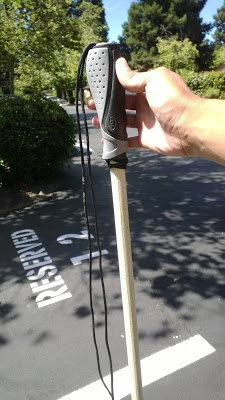 |
| Homemade Wading Staff |
Amanda came with me on this trip because I wasn’t really sure what to expect. The buddy system at it’s finest. The drive to the Pit was easy and once we drove over Lake Britton’s dam, the road that followed the river turned into a narrow one laner. We stopped at the first parking access but talked to an angler that recommended a different spot for a first-timer. As we drove further downstream and we eventually settled at Rock Creek Access. This access was easier for us because it didn’t require a hike down a canyon to get to the river. Once we were all geared up we bushwhacked our way to the river and lo and behold, the Pit River.
So here’s the run-down of my first experience with the Pit:
- The Pit River was easier to wade than I had expected. When I heard, “Bowling balls covered in snot” I was prepared to experience exactly that. The rocks were irregular shaped and everything that was under the water was covered in brown algae. As long as you didn’t over do the wading and took it slow, you could get to areas that didn’t look accessible at first glance. The Pit is not a river you should visit if you don’t have a lot of experience bushwhacking and wading. Never underestimate a body of water. If in doubt, back out.
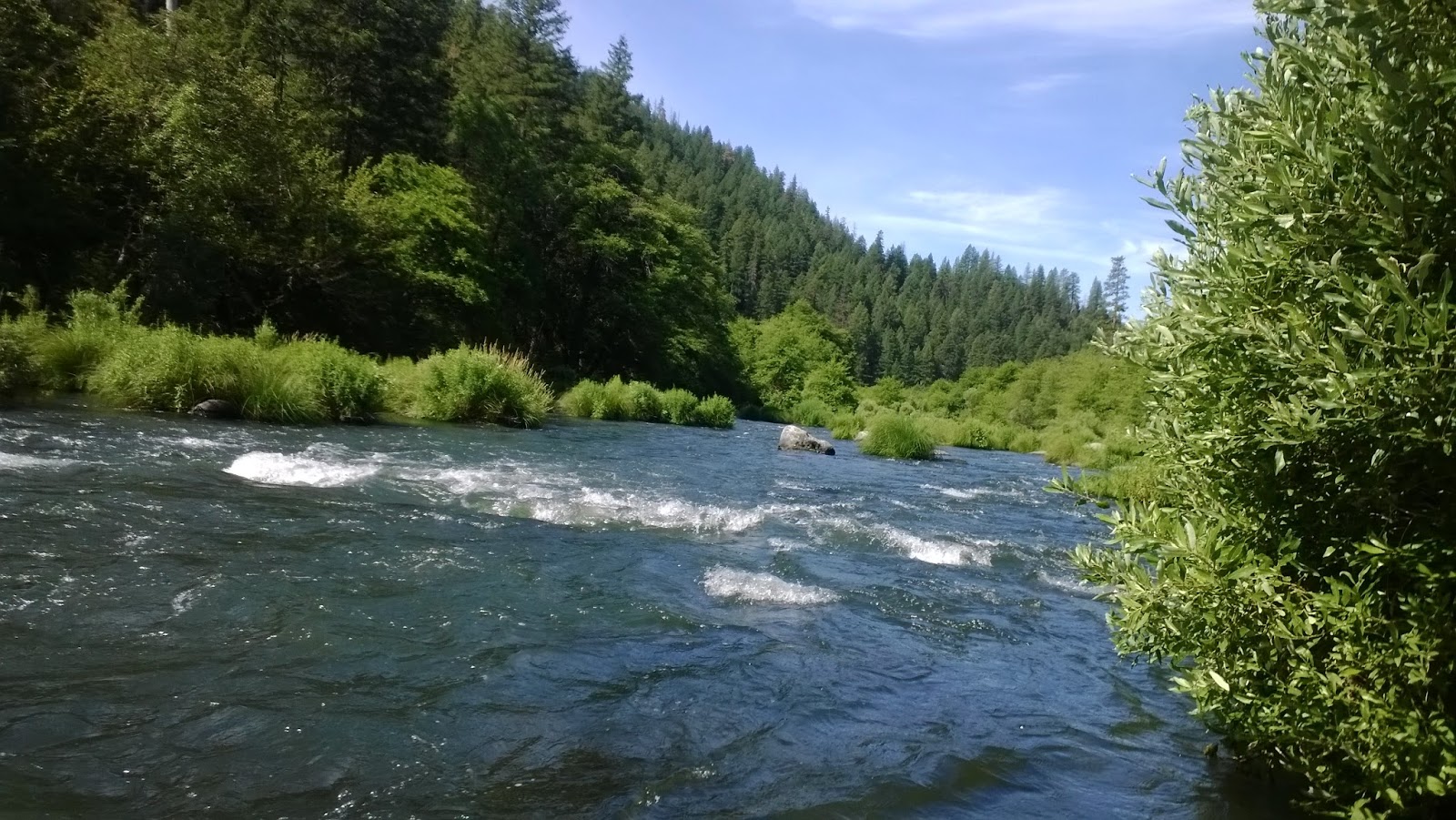 |
| Can I Wade Here? |
- A wading staff is REQUIRED! I’m glad I brought one along because I wouldn’t have been able to get around without it. The rocks are pretty slippery but they aren’t “ice” slippery. Adding a third leg will help you get around easier and keep you safe. Wade like your a blind man tapping the ground to make sure its stable enough to step.
- Small islands of tall grass can be found growing in the middle of the river. Although these islands make a great stepping stone they can be deceiving to step on because the tall grass could be hiding pit holes. I used my wading staff to poke several islands to ensure that there weren’t any sneaky holes about and whether or not they could support my weight. All great reasons to bring a wading staff.
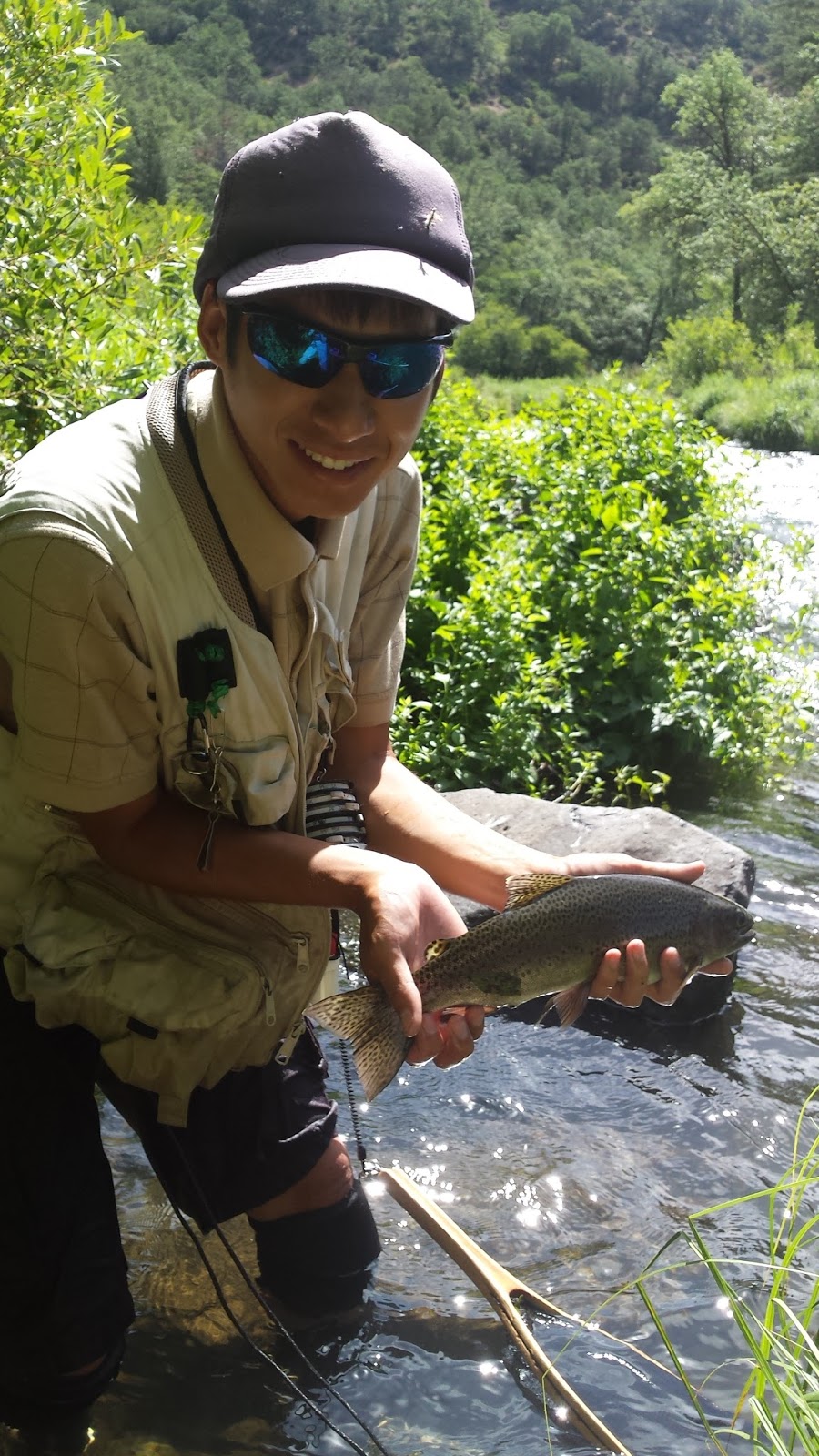 |
| First Pit Fish |
- The fishing was easy. The toughest part of the Pit was getting around the river, however once you found a decent spot there was always a fish to be caught. The fish there like to hold in deep oxygenated white water similar to the fish on the North Fork of the Feather River. The majority of the fish I caught were dinks but I did manage to land two fish over 16” one on a streamer and another on a dropper nymph. The high rainbow trout density is real.
 |
| Super Nice Pit Trout |
The Pit River is an awesome river that challenges your physical skills more than your fishing skills. Instead of making every cast count, make every piece of gear you bring count. Anglers told me that I was going to get my ass kicked on the Pit but I didn’t feel like I got beat until I visited Hat Creek.
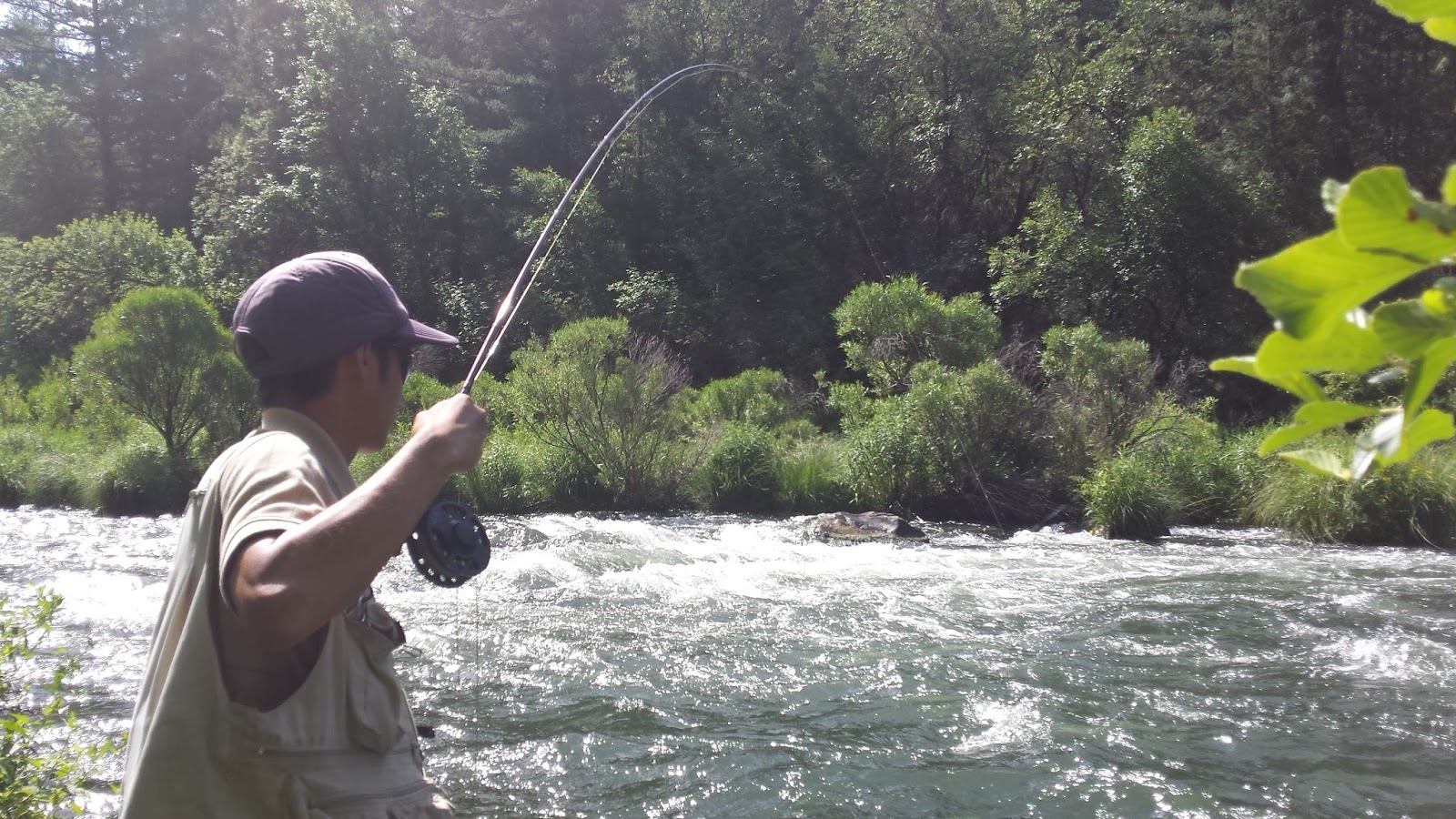 |
| Fish on! |


